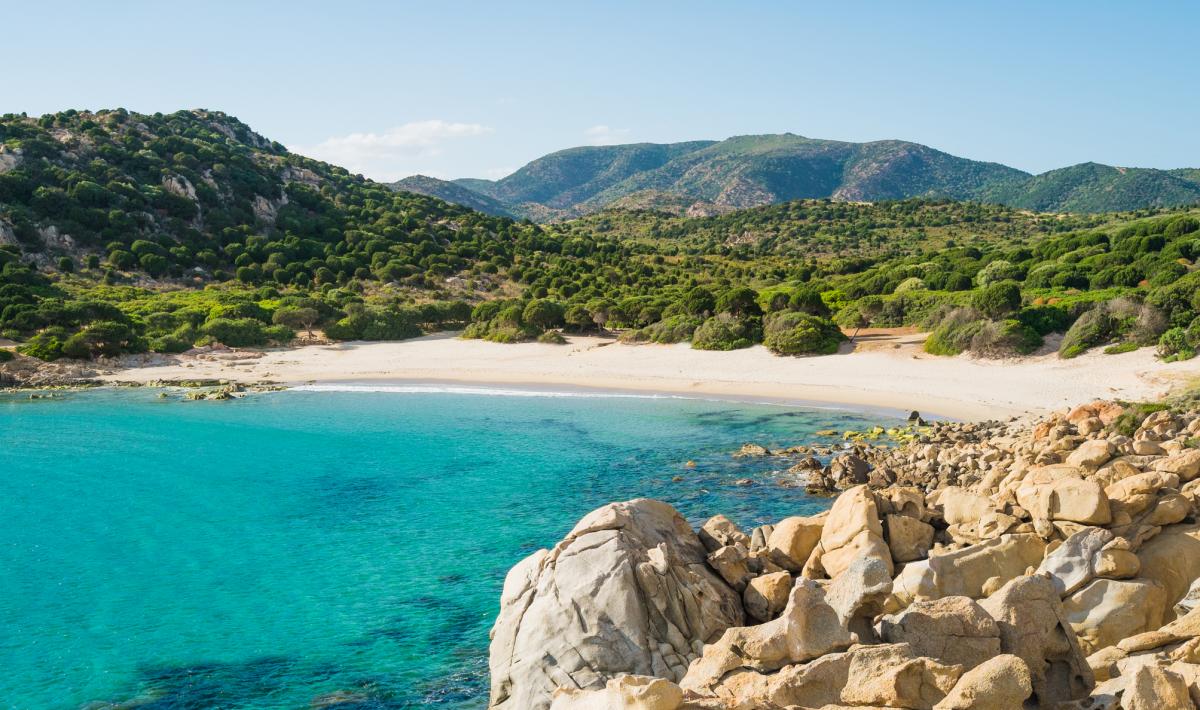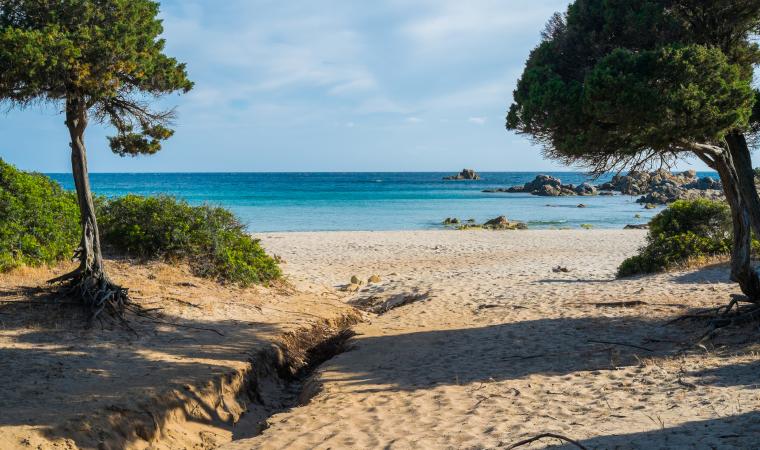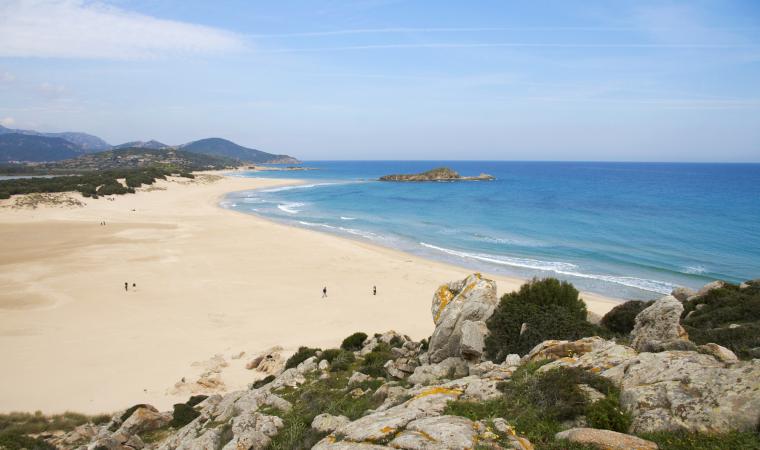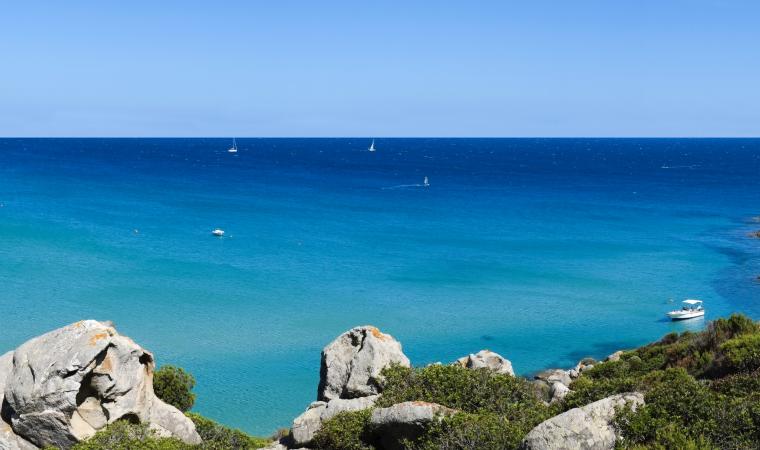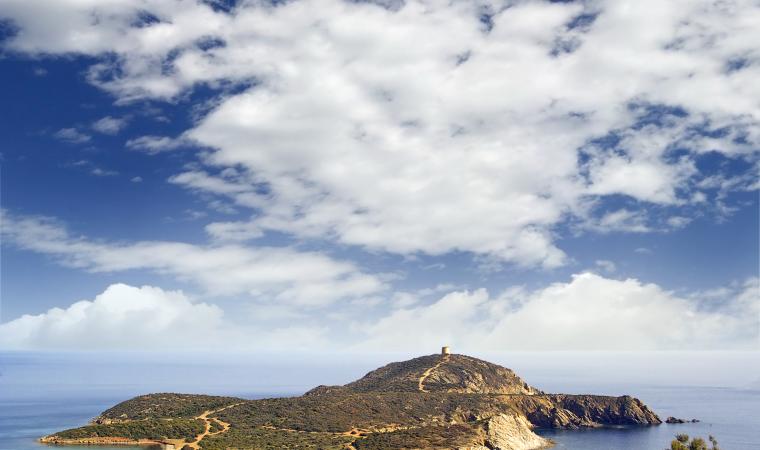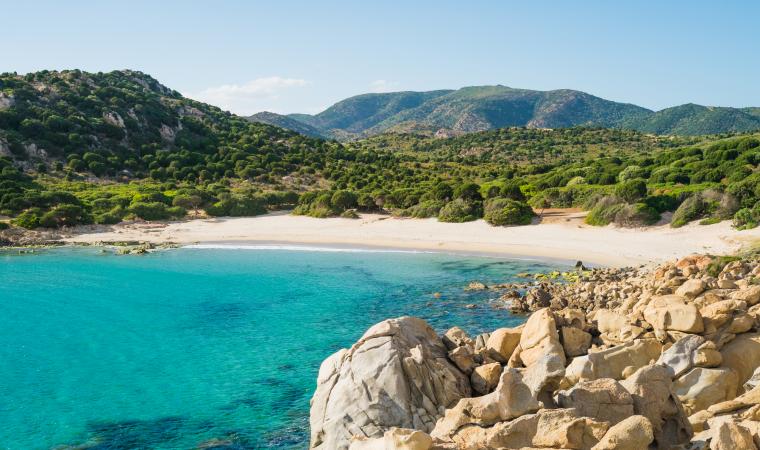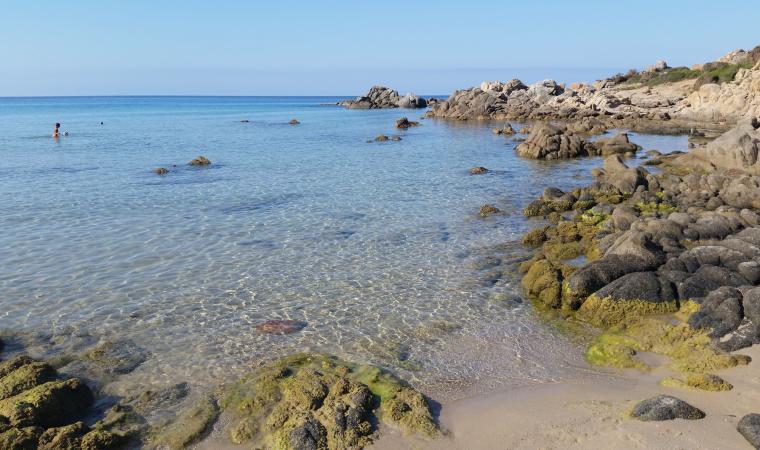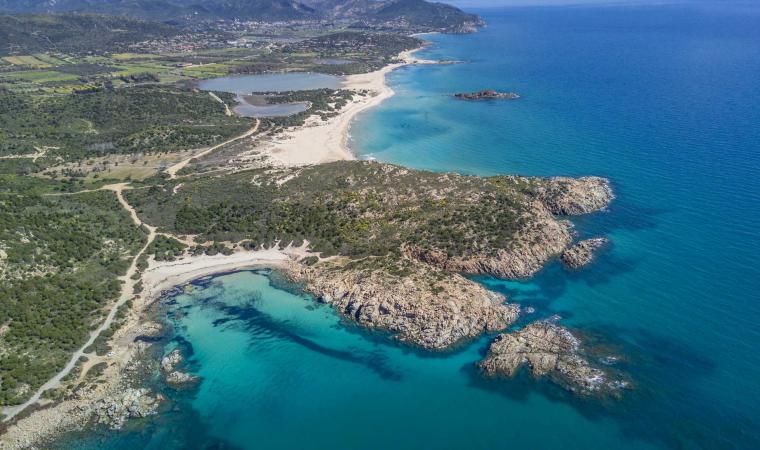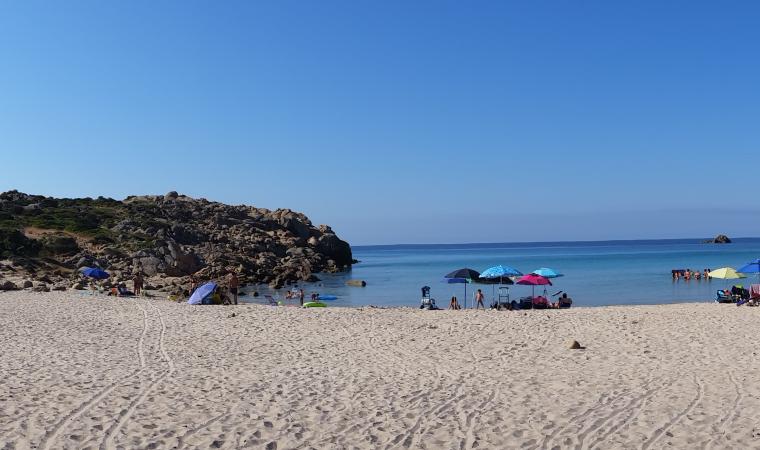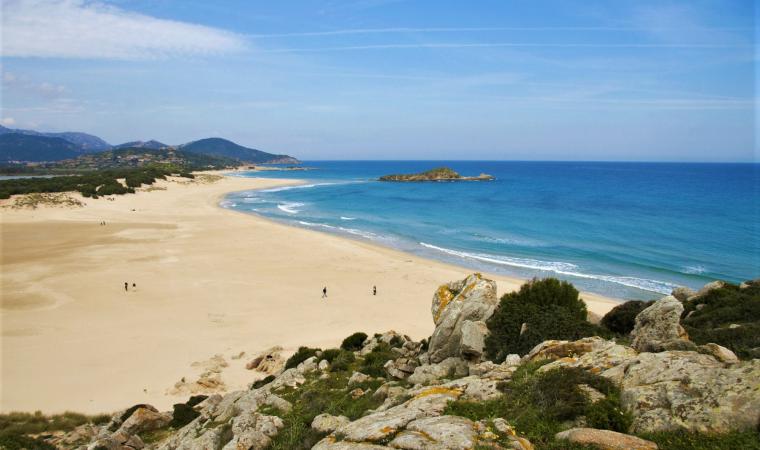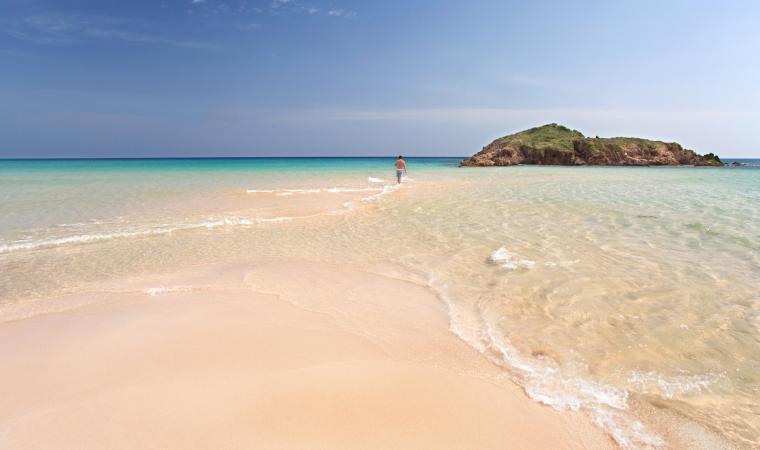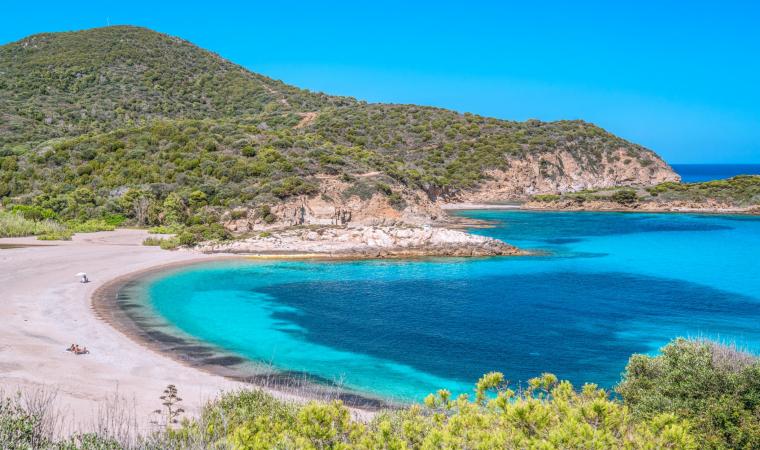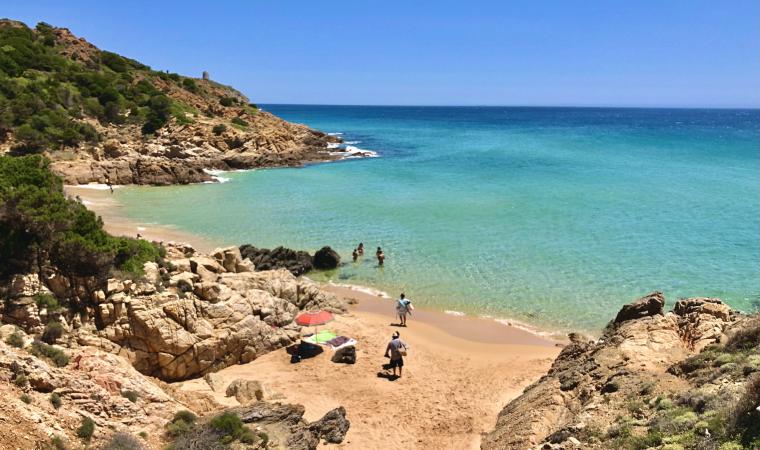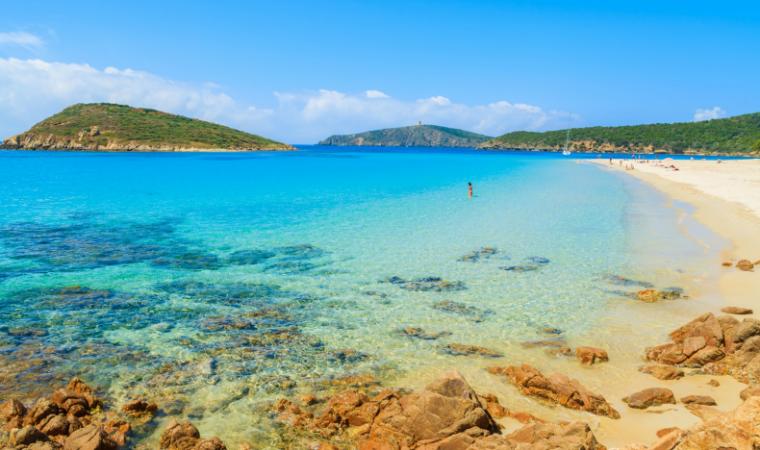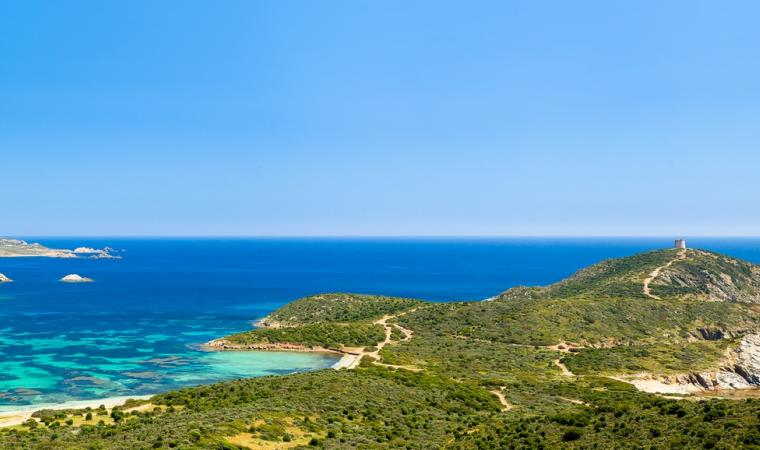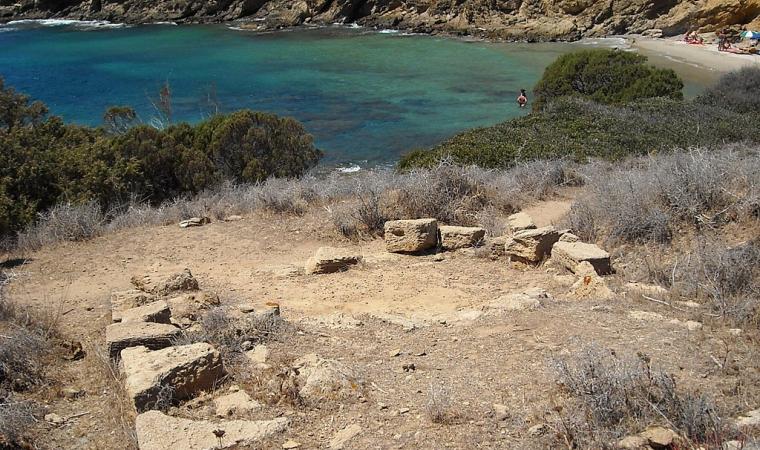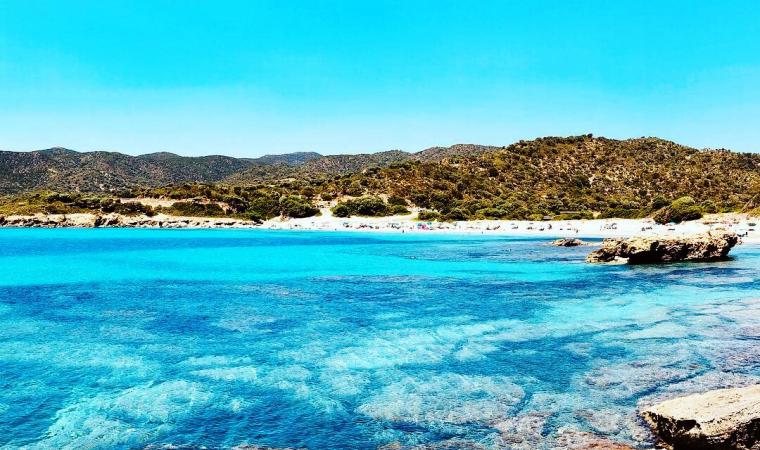A charming stretch of fine, golden sand, enclosed between two pink granite promontories that stretch towards the sea, forming a natural pool. Behind it, there are sand dunes with Mediterranean vegetation and a pine and juniper forest. Cala Cipolla has a distinctive appearance with solitary, wild nature: it is one of the most captivating beaches of the Chia area, in the territory of Domus de Maria, three quarters of an hour from Cagliari. It is a little to the east of the promontory of Capo Spartivento, over which a lighthouse stands, accessible via a path, from which you can enjoy a view of the entire southwestern coast.
The splendid little cove is hidden between the hills and is characterized by a transparent sea, with iridescent colours that range from deep blue to green. The sandy seabed has shallow waters for several tens of metres from the shore, making it perfect for children. Every now and then, small rocks interrupt the uniformity of the waters. All around, the Mediterranean scrub frames the little cove. It is an ideal destination for surfers and it is popular with those who like underwater fishing and scuba diving. The car park is four hundred metres from the beach, where there is also a kiosk-bar.
The fine, golden sand is typical of the entire Chia coast, which is one of the most popular tourist locations in Sardinia: over six kilometres of dreamy coves and beaches that you can admire from the 17th-century Aragonese tower. A promontory separates Cala Cipolla from Su Giudeu, a beach used in films and advertisements. Further to the east, there is Sa Colonia, a kilometre of sand between two promontories, Cala del Morto, a small, sheltered beach with shallow waters, and Cala della Muscia, which can only be reached via the sea. Not to be missed is Su Cardolinu (meaning mushroom), a little island joined to the mainland by an isthmus of sand, where the tophet of the Phoenician city of Bithia (8th century BC) was unearthed, and can be visited on foot from the beach of Porticciolo. Close to it, there are two ponds: you will notice and take close-up photographs of the great flamingos, in the company of herons, coots and Great Cormorants.

